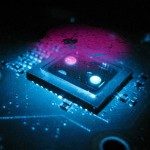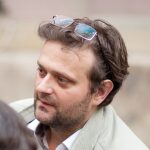Link to Pubmed [PMID] – 27550960
EMBO J. 2016 10;35(19):2120-2138
Synucleinopathies such as Parkinson’s disease are characterized by the pathological deposition of misfolded α-synuclein aggregates into inclusions throughout the central and peripheral nervous system. Mounting evidence suggests that intercellular propagation of α-synuclein aggregates may contribute to the neuropathology; however, the mechanism by which spread occurs is not fully understood. By using quantitative fluorescence microscopy with co-cultured neurons, here we show that α-synuclein fibrils efficiently transfer from donor to acceptor cells through tunneling nanotubes (TNTs) inside lysosomal vesicles. Following transfer through TNTs, α-synuclein fibrils are able to seed soluble α-synuclein aggregation in the cytosol of acceptor cells. We propose that donor cells overloaded with α-synuclein aggregates in lysosomes dispose of this material by hijacking TNT-mediated intercellular trafficking. Our findings thus reveal a possible novel role of TNTs and lysosomes in the progression of synucleinopathies.





